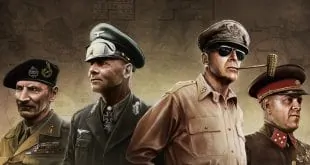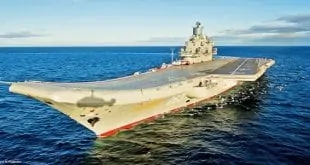When we think of kingdoms and empires, our first thought usually goes to the Romans or Ottomans.
History often remembers only what it wants to remember, people or entire civilizations getting lost in the sands of time.
This is why chances are you’ve probably never heard about these 10 Great Kingdoms Forgotten By History.
10. Chola Dynasty (300 BC-AD 1279)
The Chola Dynasty was one of the longest-lasting empires in Southern India.
Their prestige came from their astonishing military power, recognized and feared by many other Indian kingdoms.
During the peak of its glory, the influence of Chola stretched far beyond its borders, entering the territories of the Maldives and various Southern African countries.
Since nothing lasts forever, their infamous army’s power began to falter, as repeated attacks from other kingdoms were shrinking their territory more and more. The Chola Dynasty ended due to several factors, including their choice to split from the central government.
9. Sasanian Empire (224–651)
Many great empires were born before the rise of Islam in the Middle East. And, although widely forgotten by the public, the Sasanian Empire was one of them.
This kingdom stood out because it was wholly dedicated to the religion of Zoroastrianism, an ancient belief system that worshipped the wise deity Ahura Mazda.
The Sasanians followed a policy of military expansion, which led them to seize control of most of the Middle East and Egypt.
Unfortunately, they ended up getting attacked by the expanding Byzantine, respectively Muslim, Empires, something that led to their decline and the disappearance of Zoroastrianism.
8. Visigoth Kingdom (418–720)
The Visigoth Empire was a conglomeration of Germanic tribes which were contemporary with the Romans. They were famed warriors who were feared even by Rome.
The Romans and Visigoths struck an agreement in which the Visigoths were allowed to form an empire in Europe in exchange for military assistance, should Rome ever need it. Torn by internal conflicts, the Visigoth Empire became vulnerable enough to allow the Muslim invaders to march an attack on them.
7. The Kingdom of Strathclyde (450–1093)
After the Roman Empire disintegrated in the British Isles, many new kingdoms emerged due to the formed power vacuum. Strathclyde was one of them, crystallizing in Southern Scotland.
The main focus of the kingdom was to maintain and preserve its civilization. This is something that helped Strathclyde offer better living conditions at the start of the Dark Ages.
It was the Vikings who led to the collapse of the kingdom. They weakened its power to the point where the last independent king willingly submitted to English control.
6. Merovingian Dynasty (476–750)
Once considered the “kingdom of kingdoms,” the Merovingian Dynasty was an empire that, for a long time, occupied most of the European territory. It was located on the grounds of France, with the Merovingian rulers being considered the first French kings.
Essentially, it was composed of multiple kingdoms, each led by its king that was subordinated to the head of the dynasty.
This same form of organization is what sent it on the way to damnation. Affected by the constant civil wars raging through the empire, the royal house eventually starting losing power. After a while, the Merovingian Dynasty had disappeared completely.
5. Kingdom of Aragon (1162–1716)
For centuries, Aragon was a powerful kingdom that controlled most of the Mediterranean territories. Considered to be the nucleus around which Spain was formed, it resulted from a union between Catalonia and the Kingdom of Aragon. For many years, the empire’s influence gravitated around the area of Mediterranean Spain and Italy.
The War of the Spanish Succession triggered the kingdom’s downfall, as Aragon eventually succumbed to the control of the newly unified Spanish forces. Although it remained semiautonomous for a century, it was ultimately wholly incorporated in Spain in the first half of the 19th century.
4. Empire of Trebizond (1204–1461)
An empire that matched the power and fame of the Romans was the Byzantine Empire. After it collapsed, it scattered into multiple independent states, and Trebizond was one of them.
This kingdom wasn’t a special military force, but it had an incredibly strategic position, located next to the Black Sea. This allowed for trade control. Also, Trebizond often mediated conflicts between Europe and the Orient.
When the Ottomans started becoming a real threat, Trebizond joined forces with other Asiatic countries to try to end their expansion. This turned out to be a terrible idea, as the Ottomans responded with a smashing counterattack, eventually annexing the kingdom to their territory.
3. Grand Duchy of Lithuania (1236–1795)
Lithuania is a relatively small East European country, so to hear that it used to be one of the most powerful kingdoms during the medieval era may come off as a bit surprising.
Initially a conglomeration of independent tribes, they eventually united under the lead of King Mindaugas. After that, it was only a matter of time before the duchy was conquering most of the European territory, including chunks of present-day Russia.
The kingdom’s downfall was the result of a succession of weak rulers, who allowed Lithuania’s power to slip into the hands of their then ally Poland.
2. Crimean Khanate (1449–1783)
There was once a hugely influential empire known as the Mongolian Golden Horde. For decades, they led nomad lives, conquering territories wherever they went.
However, certain members grew tired of participating in conquests and of the general Mongolian lifestyle. They split from the Golden Horde, crystallizing a kingdom of their own: the Crimean Khanate. The khanate conflicted with the Ottoman Empire and Muscovite Russia.
Although it lost battles against the former, significant portions of the Muscovite territory, fell under the control of the Crimean forces. Unfortunately for them, Russia started growing in power. Soon enough, it turned the odds in its favor, conquered the Crimean Khanate, and annexed it as a constituting part of Russia. Today, this is the source of an actual conflict raging between Russia and Ukraine.
1. Mughal Empire (1526–1540, 1555–1857)
After the Turkish prince Babur had lost control over his Asiatic kingdom, he was led by his thirst for power to northern India. He took the subcontinent for himself, only losing it for 15 years to Afghanistan rulers.
However, once they were dethroned, the Mughal Empire became a constant presence in India, one of the most powerful governments on the territory for centuries.
Unfortunately, just like the rest of the subcontinent, the Mughal Empire was gravely affected by the British East India Company. After the British Crown had claimed absolute control over India, the kingdom’s destruction became an imminent reality.
Conclusion
As the years pass, even the significant events get erased from our memories. These 10 Great Kingdoms Forgotten By History are no exception.
Image sources: [10], [9], [8], [7], [6], [5], [4], [3], [2], [1]
 The Education Network Best Ten List Articles
The Education Network Best Ten List Articles
















![Dracula, Vlad The Impaler [10 Less Known Facts]](http://ten.info/wp-content/uploads/Vlad-The-Impaler-310x165.webp)

